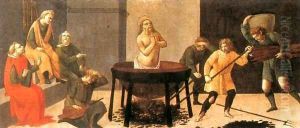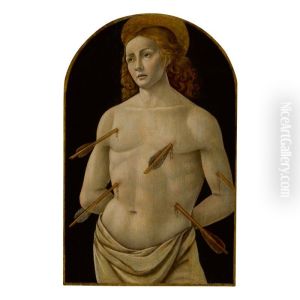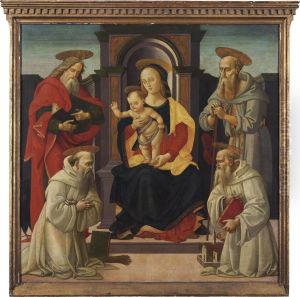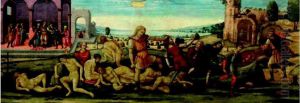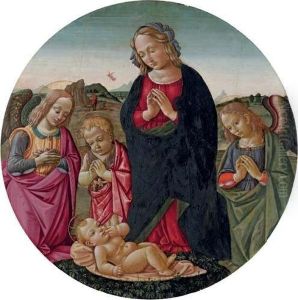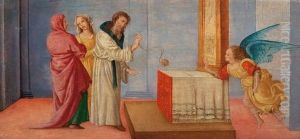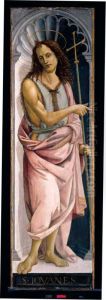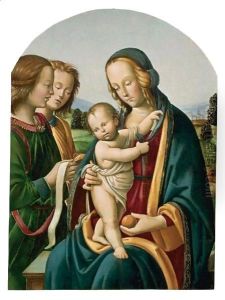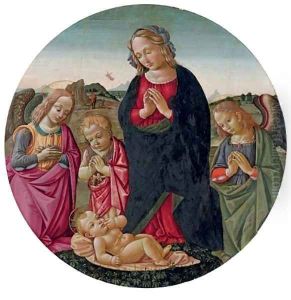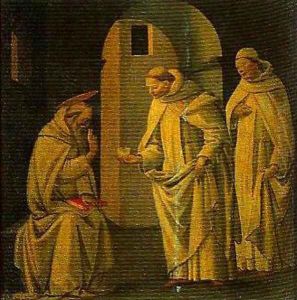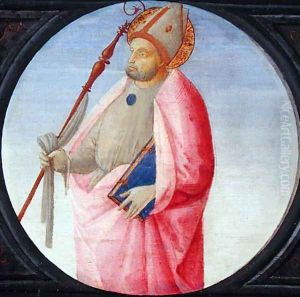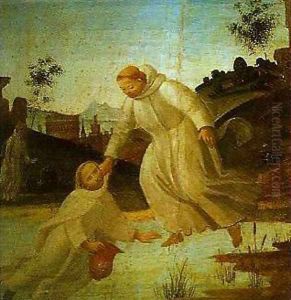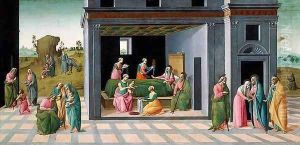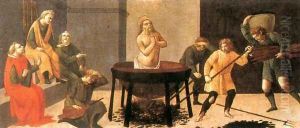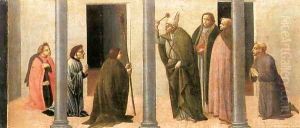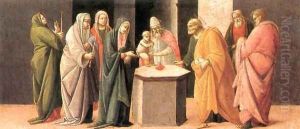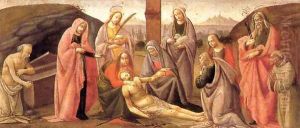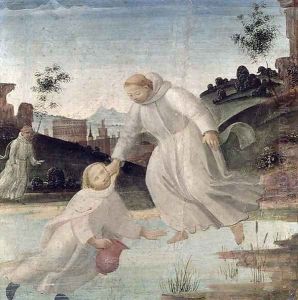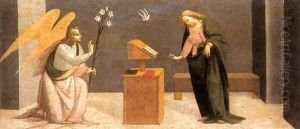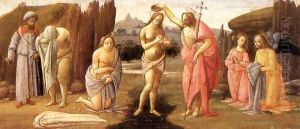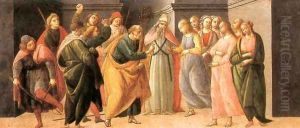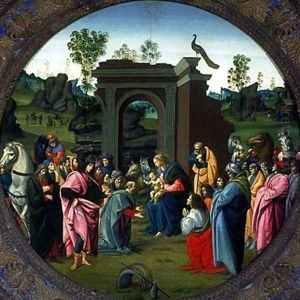Bartolomeo Di Giovanni Paintings
Bartolomeo di Giovanni, also known as Alunno di Domenico for his association with the Florentine artist Domenico Ghirlandaio, was an Italian painter of the early Renaissance period. His exact date of birth is not known, but he is first mentioned in documents dating from 1488, and his work reflects the stylistic influences of his time.
Bartolomeo's career unfolded during a rich period of artistic achievement in Florence, where he would have been exposed to the works of masters such as Leonardo da Vinci, Michelangelo, and Raphael. However, he was particularly associated with Domenico Ghirlandaio, under whose guidance he developed his craft. Ghirlandaio was known for his detailed narrative frescoes, and this influence is evident in Bartolomeo's own work.
While not much is known about Bartolomeo di Giovanni's personal life, his artistic output suggests that he was a competent painter who managed to secure commissions that catered to the tastes of his patrons. He contributed to the decoration of the Palazzo Vecchio in Florence and produced altarpieces and other religious works for various Florentine churches and monasteries.
One of his notable works is the predella for Domenico Ghirlandaio's high altarpiece in the Sassetti Chapel in Florence. This piece includes scenes from the life of Saint Francis and showcases Bartolomeo's ability to create narrative scenes filled with multiple figures and detailed landscapes. His style is characterized by clear composition, a vivid color palette, and an attention to detail that was typical of the Florentine Renaissance.
Bartolomeo di Giovanni's work is seen as a bridge between the innovations of the early Renaissance and the more mature, harmonious compositions of the High Renaissance. He worked during an era when artists were beginning to experiment with perspective and anatomical correctness, and although he did not achieve the fame of his more illustrious contemporaries, his paintings reflect the trends and artistic concerns of the period.
Bartolomeo di Giovanni's activity seems to have ceased around 1501, and it is believed he died around this time. His exact death date is unknown, but his last known works date to the very end of the 15th century. Despite the lack of extensive personal records, his contributions to the art of the Renaissance continue to be recognized by scholars and enjoyed by admirers of the period.
